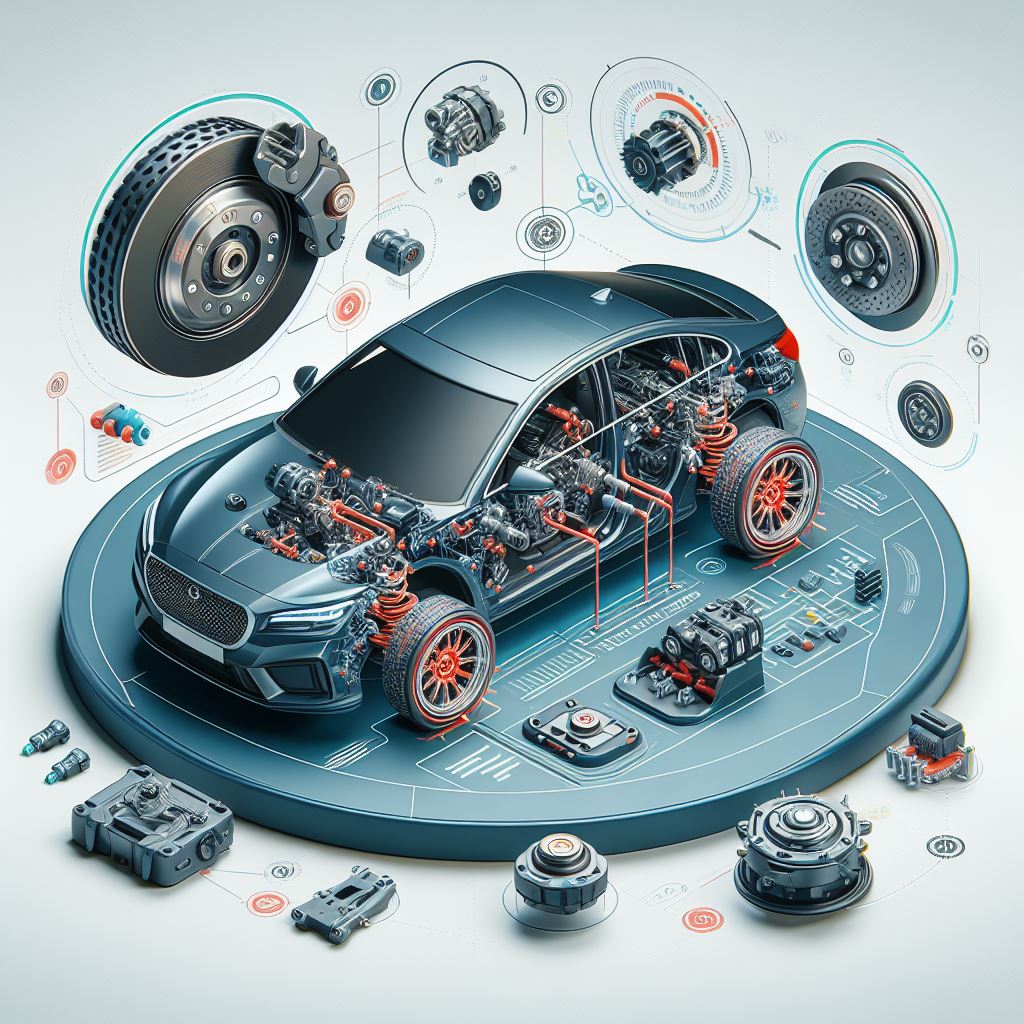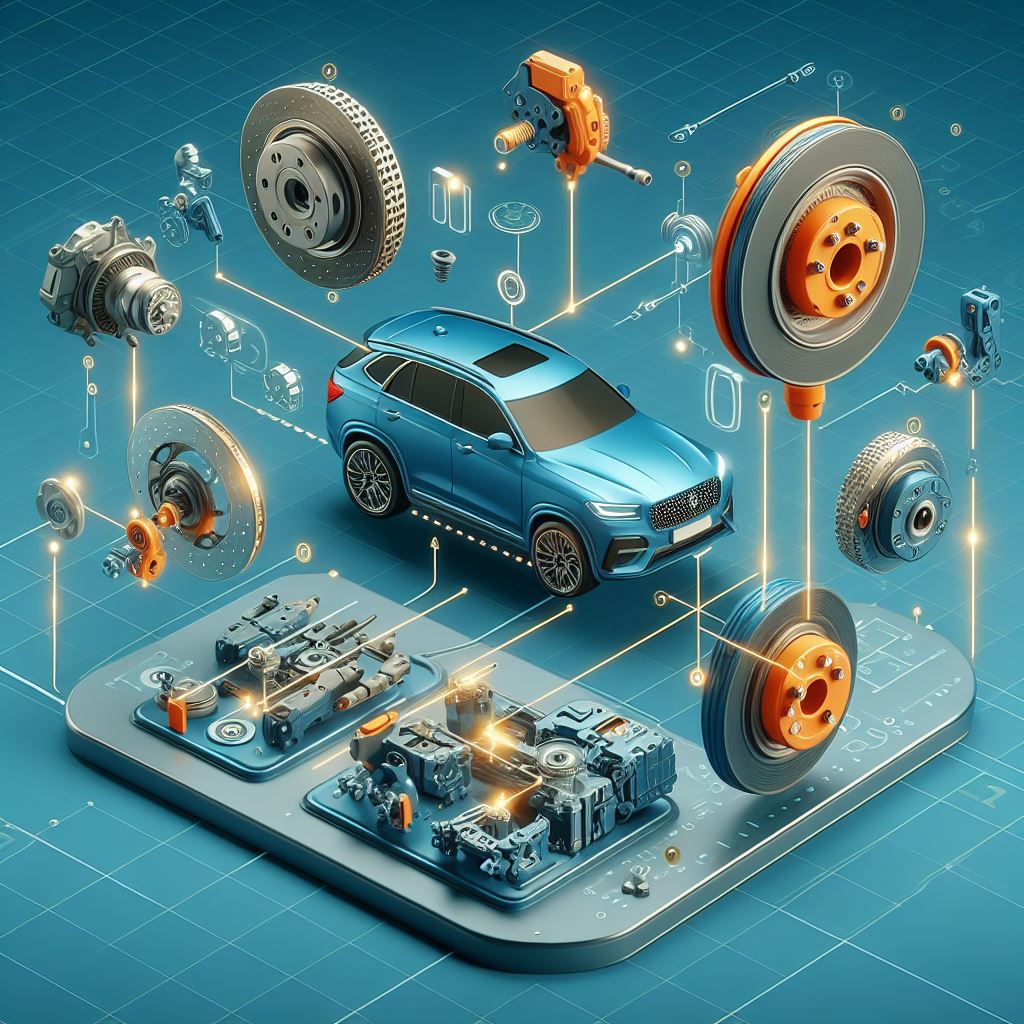What Is The Difference Between Front And Rear Brakes In A Car?
From a physics and mechanical perspective, front and rear brakes differ. The main difference is the amount of heat they produce while functioning. Firstly, both sets of brakes use friction to convert the kinetic energy of a moving vehicle into heat energy to slow it down and bring it to a stop.
However, due to the different sizes, weights, and surface areas of the brake rotors, calipers, and pads, there’s a significant variation in the amount of heat that each set generates. Additionally, cars often have ventilated discs up front that allow air from outside sources to move over them as an additional cooling mechanism when bringing your vehicle to a halt. Read on to learn more in detail.
Table of Contents
First, Let’s Get to Know What is Front Brakes
Front brakes are an essential component of vehicle safety and performance. Modern cars have disc brakes in the front, which provide a larger hydraulic pressure and friction surface area than the rear brakes. This bias to the front brakes allows them to deliver up to 75% of a car’s stopping power during normal braking.
The extra force on the front wheels helps weight transfer as they lock up, providing better handling control for drivers.
In addition to increased stopping power, disk brakes help prevent brake fade since they dissipate heat more effectively. By cooling down quickly, these brakes are less prone to become worn down due to extended use or high temperatures. Drivers can be assured that their brakes will remain strong despite extended periods on the road, allowing for safe and reliable stopping power at all times.
Now, Let’s Get to Know What are Rear Brakes
Rear brakes are vital to any vehicle, primarily because they house components of the vehicle’s emergency brake system – commonly referred to as the parking brake. However, even during normal braking, rear brakes often provide reduced stopping power compared to the front brakes.

This imbalance occurs because vehicles typically have lower hydraulic pressure applied to rear calipers and/or rotors than those at the front. While this decreased clamping force prevents wheel locking at the rear axle, it also reduces a car’s overall stopping and stability forces.
Different types of rear brakes may be employed depending on the vehicle model. Some cars may employ old-fashioned drum brakes with shoes and wheel cylinders; these are intended for maximum efficiency but can produce high levels of wear or tear when abused or neglected.
Meanwhile, disc brakes with calipers, rotors, and pads offer more efficient braking but require more frequent and maintenance-intense flushing due to their relative complexity and surface area reduction of friction surfaces over time.
For most drivers, though, rear braking provides enough force to control their vehicle in everyday conditions without major issues.
What is the Difference Between Front and Rear Brakes in A Car?
The brakes in a car are essential components of a safe and effective braking system. Brakes on a car’s front and rear wheels provide different braking power and control levels. Understanding the differences between front and rear brakes can help you make informed decisions about the type of brake pads, discs, and other components best suited for your particular vehicle.
Front brakes generally produce greater levels of braking power and force because they are larger and made from materials that are better able to dissipate heat. This allows them to handle the increased friction generated during hard stops.

Additionally, the front brakes provide weight transfer for handling control when braking. Rear brakes typically produce lower levels of stopping power due to their smaller size and decreased hydraulic pressure, although some cars may employ disc brakes for improved performance.
No matter the type of vehicle, brakes are essential for safety and performance. To ensure this, cars are equipped with several components that work together to bring the car to a stop.
One such component is the brake pad, which provides friction between the wheel and the rotor. The pads come in different materials depending on their location, with harder pads used in the front and softer pads used in the rear.
While understanding the differences between the brakes is essential, it’s important to remember that both are essential for a safe and efficient braking system.
Should I Change Both Front and Rear Brakes Together?
Ideally, you should replace your front and rear brakes simultaneously for optimal performance. Most automobile manufacturers recommend replacing all four brakes (front and rear) when any brake maintenance is required. This ensures equal wear on each wheel, allowing the brakes to function properly.
However, due to typical driving patterns and conditions, it is common for the front brakes to wear out much sooner than the rear brakes. Therefore, if maintenance is necessary due to uneven braking/wear, replacing the front brakes at that time may be beneficial.
Rear brake pads also tend to last longer because they are used less frequently than front brake pads. Furthermore, repairs such as resurfacing rotors and caliper adjustments should be done consecutively on the same day with a reputable repair facility to ensure the optimal functioning of your car’s braking system.
What are the Signs of Bad Front or Rear Brakes?
Regarding brakes, front and rear brakes perform very different functions. Front brakes provide most of the stopping power for a car, while rear brakes help balance the car during braking. That said, both sets of brakes are equally important in keeping you safe on the road.
Because front and rear brakes play different roles in a car, they can suffer wear and tear differently. Signs of bad front brakes can include a squealing or grinding noise when braking, the car pulling to one side, or a complete lack of response when depressing the brake pedal.
Rear brakes may suffer from similar problems, with additional signs being vibrations in the pedal or vehicle body when braking. If you notice any of these signs, having your brakes inspected by a professional as soon as possible is important. Failing to do so may lead to costly repairs or, worse, an accident.
Frequently Asked Questions [FAQs]
1. Are The Rear Brakes The Handbrake?
No, the rear brakes in a car are not the handbrake. The rear brakes help to slow and stop a car by activating friction between two brake pads and the rotors on either side of the rear axle. This is referred to as “mechanical braking”.
The handbrake, on the other hand, works differently than the rear brakes. It is an independent system that uses a cable to activate the brakes on the rear wheels.
2. Do Rear Brakes Use Brake Fluid?
Yes, rear brakes do use brake fluid. The brake fluid is used to transfer pressure from the master cylinder through the system and activate the brakes on all four wheels (front and rear). This ensures that the same amount of pressure is applied to the other even when more pressure is applied to one set of brakes.
3. Is The Rear Brake Left Or Right?
According to U.S. law, bikes must be sold with the front brake controlled by the left hand and the rear brake controlled by the right hand.
4. Which Hand Is For The Rear Brake?
The front brake of a bicycle is often operated by the lever on the left side of the handlebar, while the rear brake is controlled by the lever on the right.
5. What Are The Benefits Of Maintaining Front And Rear Brakes?
No matter how well-built your car is, regular brake maintenance is essential for safety and performance. Regularly inspecting and replacing worn-out parts can ensure smoother braking and more reliable stopping power.
Maintaining both front and rear brakes also helps keep the balance between the two systems in check. This allows the car to stop quickly and efficiently, reducing the risks of an accident.
Conclusion
The difference between front and rear brakes in a car is that front brakes provide most stopping power, while rear brakes help balance the car during braking. Front brake pads tend to wear out faster than rear brake pads due to the more frequent front brake use.
It is important to watch for signs of bad front or rear brakes, such as squealing or grinding noises when braking, and to get the brakes inspected by a professional if any of these signs are present. Regular brake maintenance is also important for safety and performance and should be done on the front and rear brakes.
